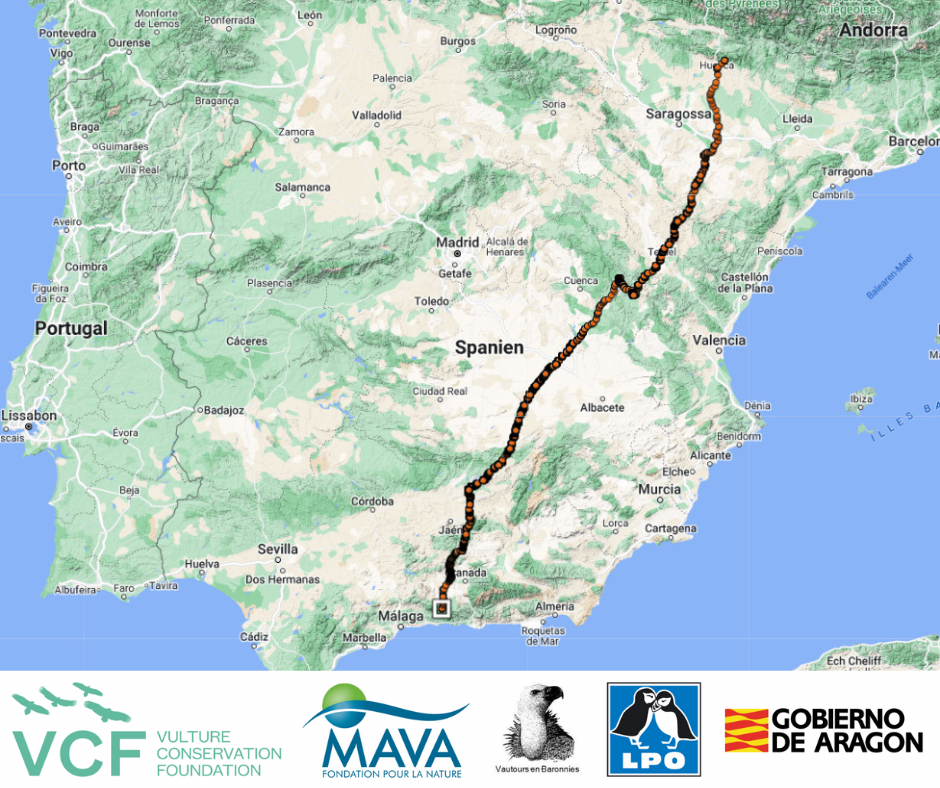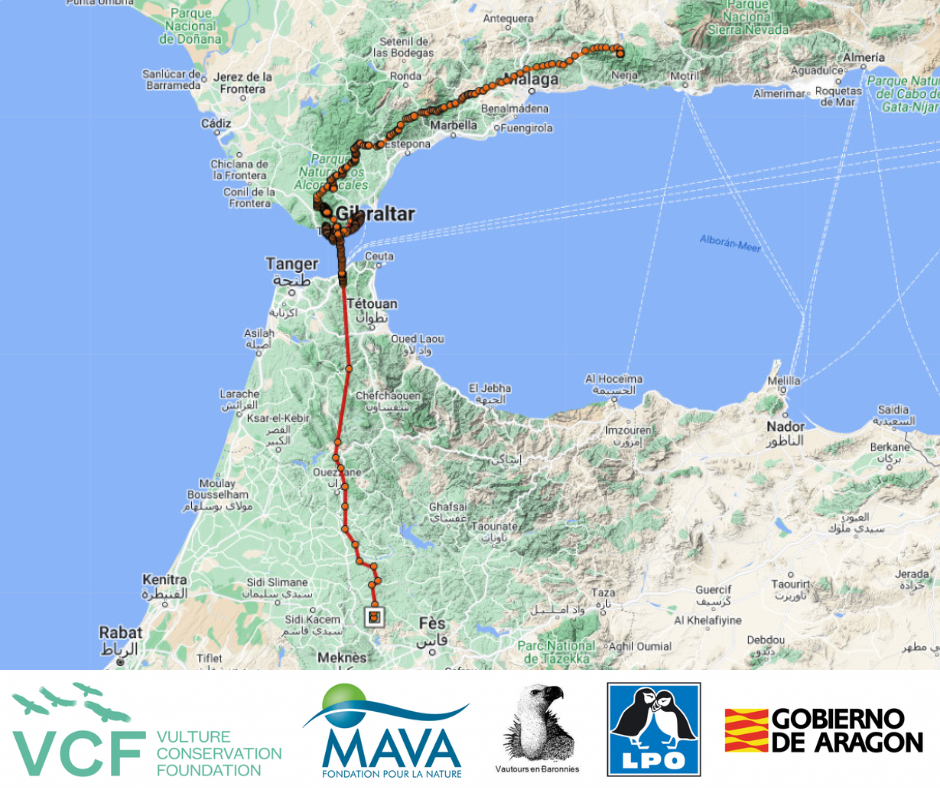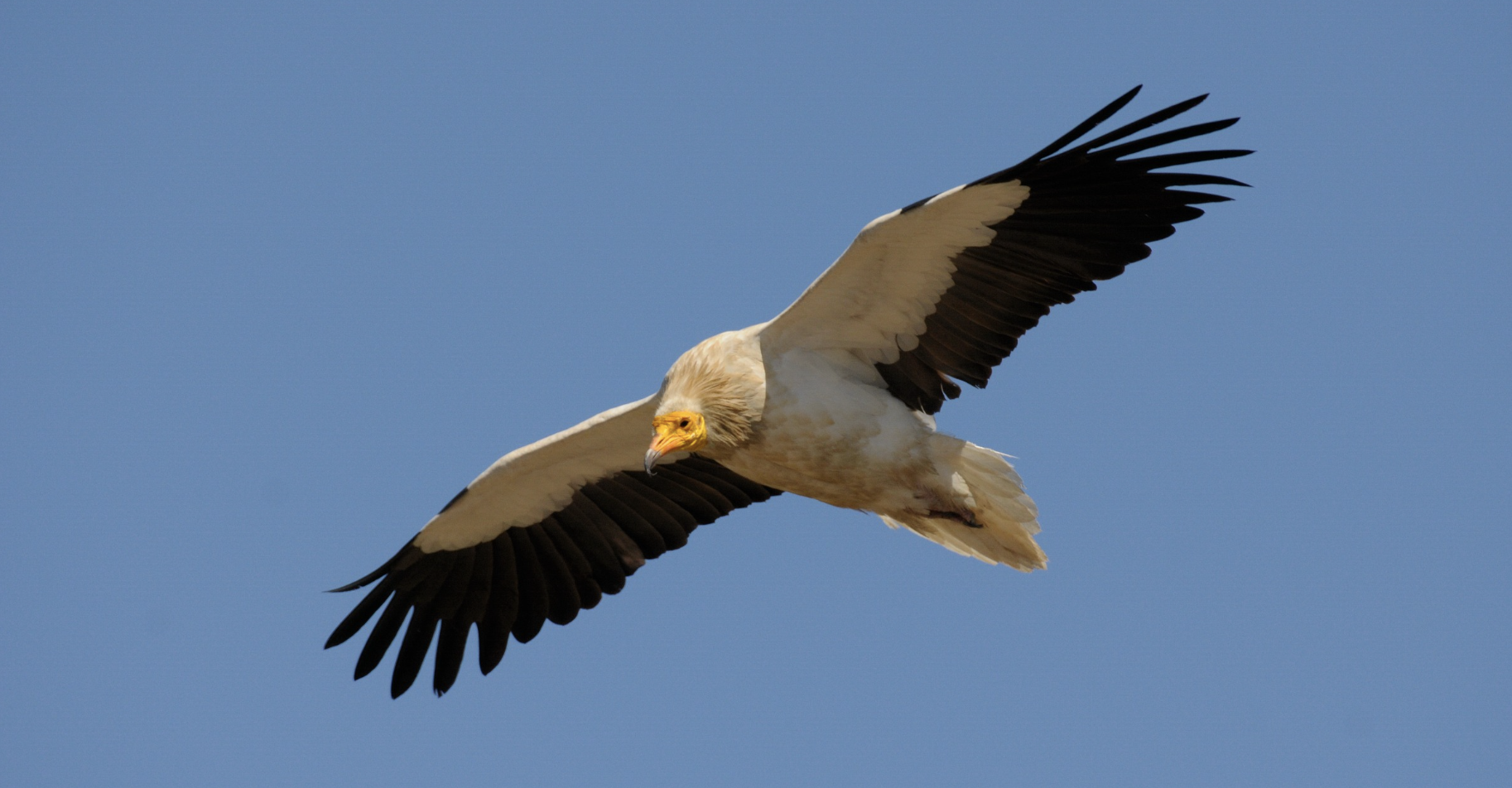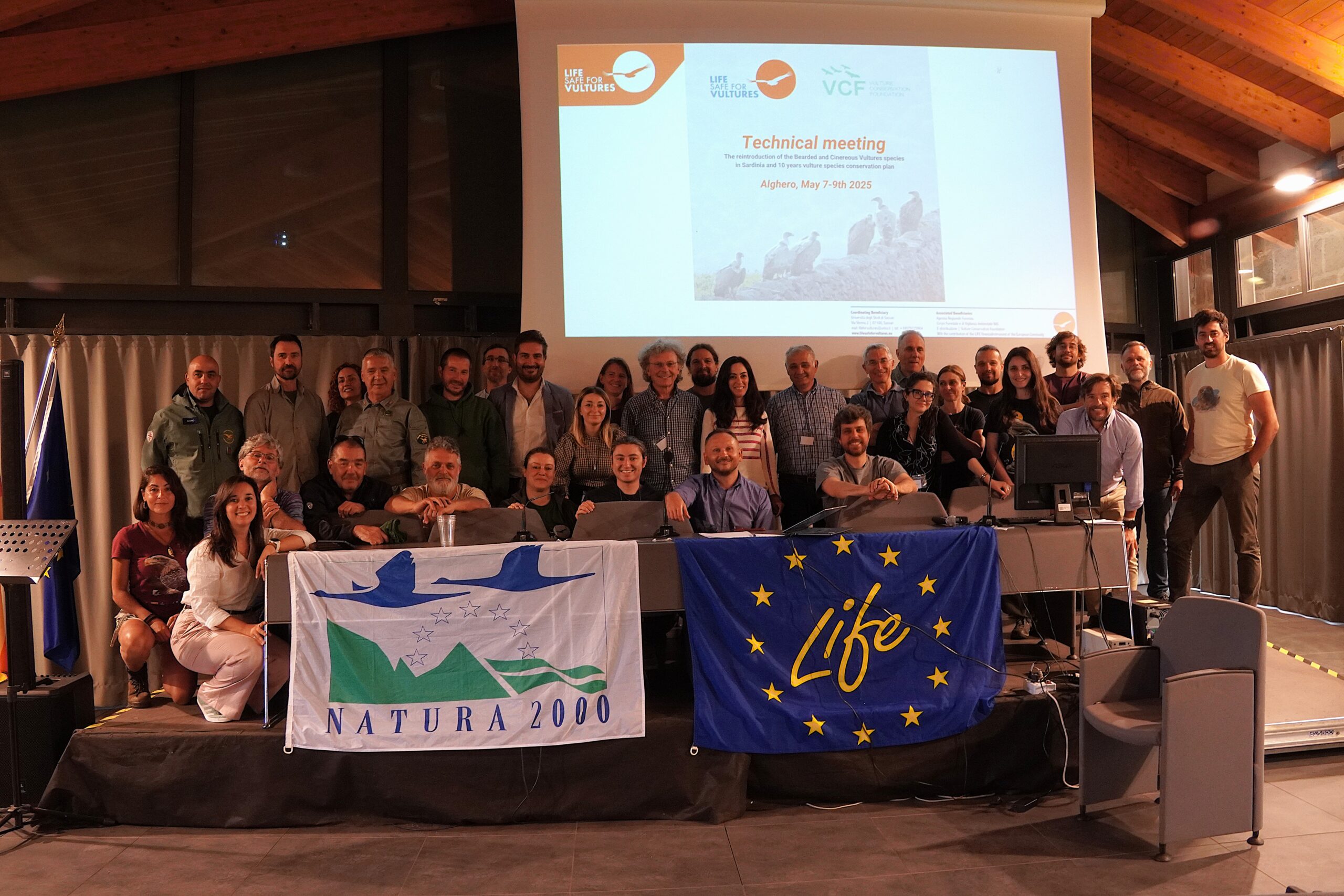It’s that time of the year again when Egyptian Vulture individuals start their autumn migration journey, leaving Europe for Africa.
This time around, Buoux ‘kicked off’ the autumn migration season. At least, he is the first to do so from the Egyptian Vultures we follow with GPS transmitters. The story of this vulture is thrilling – even though he needed rescuing twice, he turned out to be an impressive traveller.
The Egyptian Vulture autumn migration
The Egyptian Vulture is Europe’s only long-distance migratory vulture. Their journeys are long, with some individuals of the species even covering distances of almost 11,000 km during their migration. Every year, adult and young birds leave their breeding and hatching places, respectively, to travel from Europe to Africa. Juveniles usually stay in Africa for at least 18 months (sometimes longer) before returning to their natal origins in Europe in spring and starting their annual migration cycles to Africa in the autumn and back to Europe in the spring. After five or six years, they reach sexual maturity and try to establish their own territory and form a breeding pair, often not far from where they hatched themselves. Although most Egyptian Vultures in Europe migrate, there are a few exceptions – some birds stay in Europe all year round. For example, the resident Menorca population, some individuals regularly winter in Extremadura and elsewhere.
Buoux overcomes hurdles and becomes a fantastic traveller

The Egyptian Vulture Buoux had a difficult start in life. The vulture hatched in Baronnies back in 2018 and needed rescuing only one week after fledging. Following his rehabilitation and release in March 2018 in Villeperdrix, France, the vulture reached Huesca in Aragon, Spain, two months later. But, it seemed he was in trouble again as we received worrying GPS data. A local team quickly recovered Buoux, who, as it turned out, broke his wing due to a collision with a cable. The vulture nearly spent one year in rehabilitation to make a recovery. All these efforts were worth it since, in early May 2020, Buoux finally returned to the wild and has carried out incredible travels since. He successfully carried out two migration cycles between Africa and Europe and, more recently, toured European regions that are unusual for the species. Now, he is embarking on his annual long journey to the south.
Buoux successfully returns to Africa

On Saturday, 2 July 2022, Buoux started his journey from Verdon and spent some days in the Massive Central and the Pyrennes. Over a month later, on 21 and 22 August, he crossed Spain within 48 hours, covering around 1000 km along his journey! After one day of flying around Tarifa, on 24 August, he faced the ‘daunting’ stretch of water once more. His efforts proved successful! The Egyptian Vulture crossed the Strait of Gilbatrar and landed in Morocco safe and sound. From there, he continued his journey south to arrive at his wintering grounds. He will most likely choose to spend the winter months between Mali and Mauritania, just like he did over the past two years. We hope Buoux survives the winter months in Africa and returns home next year – hopefully, to breed!

You can follow the movements of Buoux by visiting our Egyptian Vulture online public maps!


